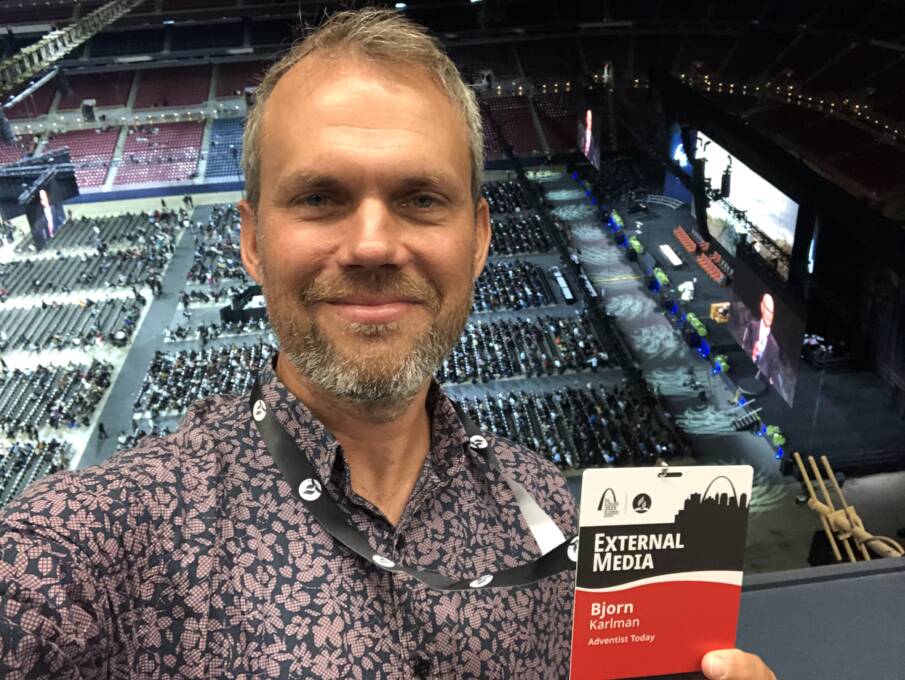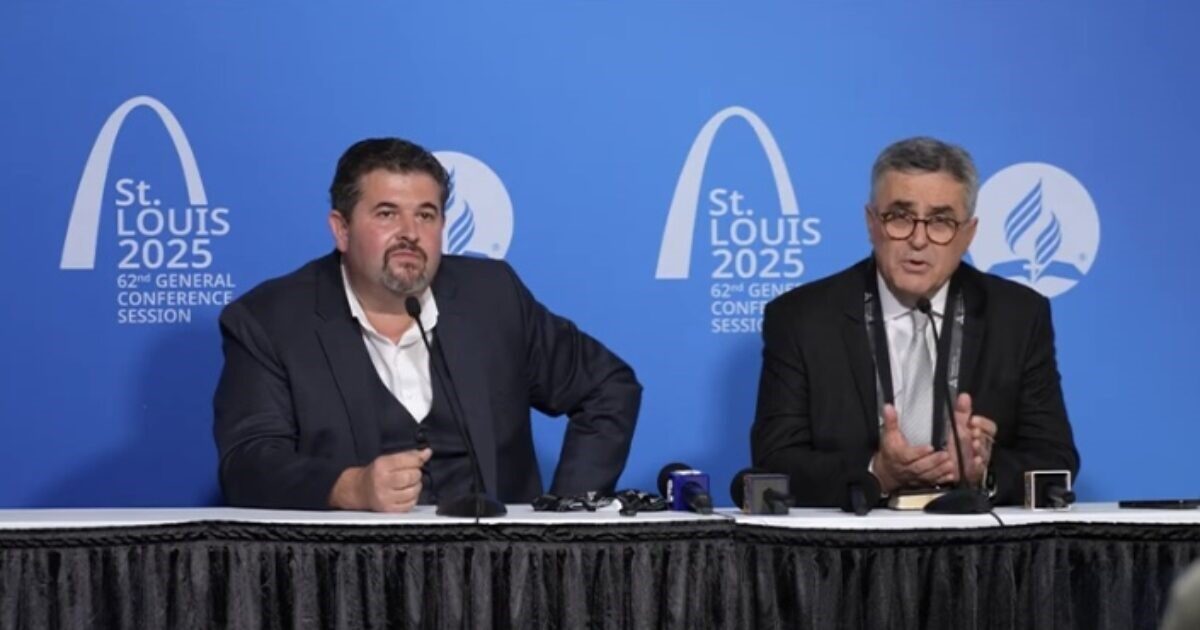Köhler’s First Press Conference: A Shift in Style, Not Substance
Pastor Erton C. Köhler’s first press conference as General Conference (GC) president was a clear break from the Ted Wilson era. The event (when Köhler finally arrived after fending off well-wishers and others on the way to the press area) was brisk, multilingual (he spoke in fluent English, Spanish, and Portuguese), and—most notably—open. Köhler took on tough questions with a mix of humor, directness, and a willingness to engage with voices that had previously been sidelined. Whether this signals real change or just a new PR strategy is still an open question.
Openness to Dialogue and Independent Media
When I asked how his leadership would differ from Wilson’s, especially on openness and modernization, Köhler avoided direct shots at his predecessor. Instead, he leaned into generational and stylistic differences:
“I have my style. He has his style…. I am younger than him. I like to use technology for the church much more. Some of those things… will show up in a daily routine of the church…. Communication will be something that you’ll see that we invest a lot [in], technology and using all the resources that we have to be focused on the mission and I believe that we can improve a lot.”
He made a point of welcoming independent media:
“Spectrum, I heard from Adventist Today and others. You are part of our church. You’re not other elements. You are part of our church. We can talk. We can dialogue.”
It’s a notable shift in tone, but whether it leads to more transparency or just more talking remains to be seen.
Structured, Accessible Communication
In a departure from recent GC president sermons that could outline over a dozen main points, Köhler’s communication was remarkably concise and structured. His answers were often presented in a formulaic manner; for instance, he addressed Adventist education by breaking it down into three core priorities: academic excellence, Adventist identity, and commitment to mission. This polished technique allowed for clear and digestible responses.
Humor and Relatability
On hot-button issues, Köhler leaned into levity. When the topic of church music came up—a perennial Adventist flashpoint—he quipped:
“Well, the next step is to bring a cross and crucify me because all the questions are coming very hot…. I hate extremes in both sides…. Let us try to come together to the center.”
It was a crowd-pleaser, but also a way to avoid taking a hard stance.
Commitment to Inclusivity and Diversity
Köhler repeatedly said he wants to lead the whole church, not just a favored segment. On questions about women’s ordination and human sexuality, he said:
“I will be open to talk with everyone, but I will be faithful to the Bible…. I need to be the leader of all of them. Not only a portion of the church, but the entire church.”
He also mentioned the importance of youth voices, women in leadership, and support for vulnerable and immigrant communities—all while anchoring his answers in Adventist identity. The rhetoric was inclusive, but specifics were thin.
Personal Touch and Vulnerability
Asked about balancing family and ministry, Köhler described the real challenges, credited his wife’s partnership, and admitted to “many problems, failures, and mistakes.” It was a humanizing moment, but also a safe one.
Academic Freedom and Constructive Engagement
On academic freedom and the role of independent thinkers, Köhler said:
“We need to talk. We need to be in dialogue…. But we expect from you that you can come together… in a way that you can support the church and the people to move forward in the mission.”
He encouraged research and creativity, as long as they strengthened the church’s mission and identity.
Balancing Tradition and Innovation
Köhler was clear: the message stays, but the methods can change.
“My main point is we don’t have to change the message, but we can change the way we present the message. And I believe that communication can find new ways of presenting the message that we have to a new audience.”
A nod to both traditionalists and those eager for innovation, but not a promise of major change.
Openness to Case-by-Case Solutions
On local autonomy and union missions, Köhler rejected a one-size-fits-all approach:
“I think that the best way to give autonomy is to give them voice. When we hear them, we understand their needs…. Every case, every situation is different. And again, I would like to hear to evaluate case by case and understand what can be the best for each situation.”
Addressing Difficult Topics with Empathy
Köhler didn’t duck controversy. On COVID-19 vaccines, he acknowledged the diversity of opinion and called for unity and respect. On immigration and vulnerable communities, he promised practical support—without grandstanding or overpromising.
Style Over Substance?
Köhler’s first press conference was a study in contrast: open, humorous, and inclusive, with a willingness to engage even the church’s critics. He simplified complex issues, humanized himself, and set a new tone for Adventist leadership. But as Köhler himself admitted, “time will tell” if this new style leads to real change. For now, Adventists have a leader who’s at least willing to talk—and sometimes, that’s where change begins.
To comment, click/tap here.
 Björn Karlman is the executive director of Adventist Today.
Björn Karlman is the executive director of Adventist Today.
PS. We’re trying something new – an experimental WhatsApp channel to bring you direct updates, insights, and highlights from the General Conference Session. Curious?





